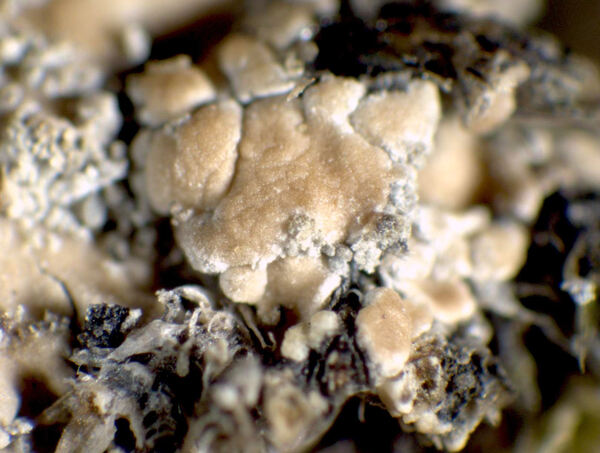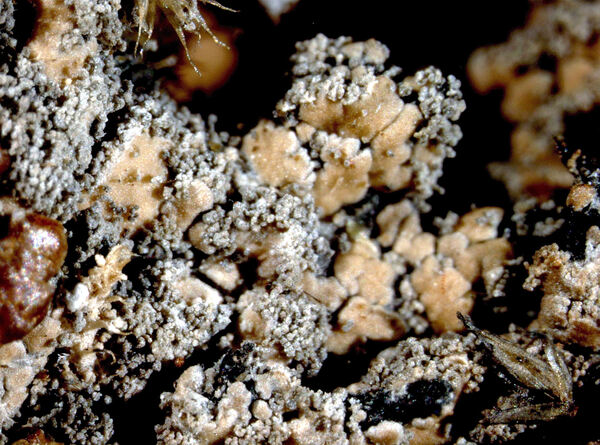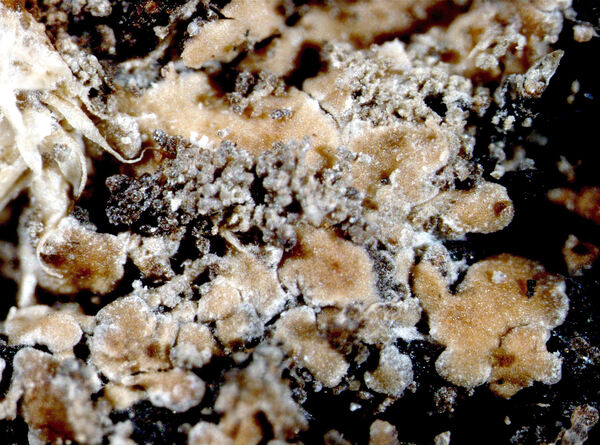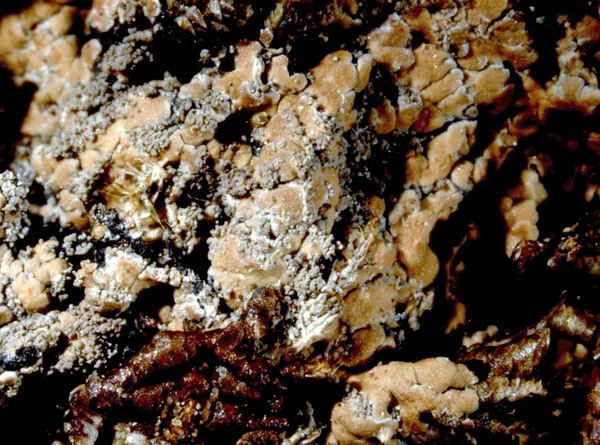Nevesia sampaiana (Tav.) P.M. Jørg., L. Lindblom, Wedin & S. Ekman
Lichenologist, 46: 652, 2014. Basionym: Pannaria sampaiana Tav. - Port. Acta Biol., ser. B, 3: 76, 1950.
Synonyms: Fuscopannaria sampaiana (Tav.) P.M. Jørg.; Pannaria craspedia var. isidiata Harm.
Distribution: N - Emil (Fariselli & al. 2020), Lig (Brunialti & al. 1999). C - Tosc (Benesperi & al. 2007).
Description: Thallus crustose-subsquamulose, heteromerous, 150-250 μm thick, firmly attached, cracked-areolate, sorediate, delimited by a bluish-black prothallus. Squamules pale chestnut brown to pale reddish brown, 0.5-2 mm wide, the marginal ones often larger and elongate, to 3-4 mm wide and long, rounded to slightly irregular in outline, flat to slightly convex, most often contiguous, with slightly ascending, usually paler margins; soralia cream-coloured, at first marginal, later confluent and often covering the whole central part of thallus, with finely granular soredia; lower surface ecorticate, developing on a felt-like, blue-black hypothallus. Upper cortex paraplectenchymatous, 35-40(-60) μm thick; medulla white, 50-75 μm thick, of intricate hyphae forming a lax plectenchyma, gradually merging into the hypothallus. Apothecia lecanorine, unknown in the mature state, the hymenium hemiamyloid. Photobiont cyanobacterial (Nostoc, the cells in clusters). Spot tests: cortex and medulla K-, C-, KC-, P-, UV-. Chemistry: without lichen substances.Note: a mild-temperate species found on bark of ancient deciduous trees in humid woodlands; certainly very rare and endangered in Italy. It is included in the Italian red list of epiphytic lichens as “Vulnerable” (Nascimbene & al. 2013c).
Growth form: Squamulose
Substrata: bark
Photobiont: cyanobacteria, filamentous (e.g. Nostoc, Scytonema)
Reproductive strategy: mainly asexual, by soredia, or soredia-like structures (e.g. blastidia)
Most common in areas with a humid-warm climate (e.g. most of Tyrrenian Italy)
Commonnes-rarity: (info)
Alpine belt: absent
Subalpine belt: absent
Oromediterranean belt: absent
Montane belt: absent
Submediterranean belt: extremely rare
Padanian area: absent
Humid submediterranean belt: extremely rare
Humid mediterranean belt: extremely rare
Dry mediterranean belt: absent
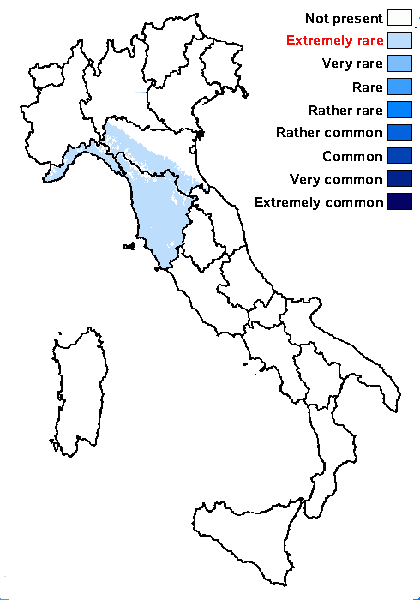
Predictive model
Herbarium samples
Growth form: Squamulose
Substrata: bark
Photobiont: cyanobacteria, filamentous (e.g. Nostoc, Scytonema)
Reproductive strategy: mainly asexual, by soredia, or soredia-like structures (e.g. blastidia)
Most common in areas with a humid-warm climate (e.g. most of Tyrrenian Italy)
Commonnes-rarity: (info)
Alpine belt: absent
Subalpine belt: absent
Oromediterranean belt: absent
Montane belt: absent
Submediterranean belt: extremely rare
Padanian area: absent
Humid submediterranean belt: extremely rare
Humid mediterranean belt: extremely rare
Dry mediterranean belt: absent

Predictive model
| Herbarium samples |
 INDEX FUNGORUM
INDEX FUNGORUM
 GBIF
GBIF
